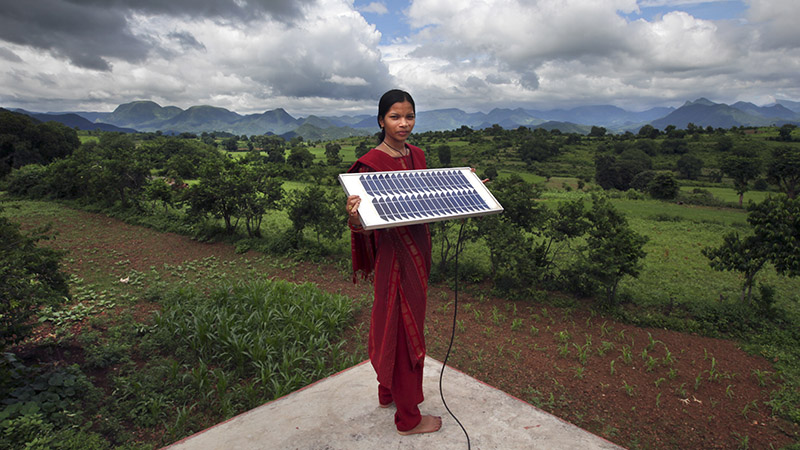The world’s richest countries are on course to miss a target to mobilise US$100 billion of climate funds a year by 2020, a new report by the UK and Australian governments has revealed.
It forecasts a total of $93 billion a year will be delivered by the end of the decade to help poorer nations invest in green energy and prepare for future climate change impacts.
The 27-page report, released on Monday, says that figure could soar to a best-case scenario of $133 billion if public funds start to leverage more private sector support in the coming years.
“The projection should be considered a conservative, indicative aggregation of public climate finance levels in 2020, rather than a firm prediction,” say the governments.
The figures are based on analysis of global climate finance flows by the Paris-based Organisation for Economic Co-operation and Development (OECD).
NEW: UK + Australian govt report suggests rich nations will likely mobilise $93 billion in #climate $ by 2020 pic.twitter.com/RWRIg2dOFD
— Climate Home News (@ClimateHome) October 17, 2016
It comes just under a month before the UN’s major climate summit of 2016 opens for business in Marrakech, Morocco, with finance high on the agenda.
Last week, UN climate chief Patricia Espinosa urged the world’s rich nations to come prepared with a plan to make good their 2009 promise to deliver $100 billion a year by 2020.
While small compared to the $286 billion renewables investments through 2015, the $100 billion number is seen as a barometer for the commitment of wealthy governments to meet their promises.
Under the OECD’s new projections, funding solely from governments including the US and EU-28 and development banks will tip $67 billion by 2020, up from $41bn in 2014.
It then adds the amount of green finance from banks, funds and pensions that this could unlock, leading to a final figure closer to $100 billion.
Estimated public #climate $ flows in 2020, from new UK + Australian govt report pic.twitter.com/2goVLi50x1
— Climate Home News (@ClimateHome) October 17, 2016
“According to the analysis, modest assumptions about increased leverage ratios would lead to projected overall finance levels in 2020 above US$100 billion,” say the governments.
“We are confident we will meet the US$100 billion goal from a variety of sources, and reaffirm our commitment to doing so through the range of actions outlined in this Roadmap.”
Other factors influencing finance flows include private capital levels in 2020, investor preferences, currency fluctuations and project pipelines, the report stresses.
Despite the $93 billion figure being the lowest estimate, Climate Home understands the US government argued strongly against any suggestion this would be a guaranteed minimum.
Analysis: As the world hails Paris, Africa’s energy plans are stagnating
Analysts offered mixed reactions to the report, which will likely spark fierce debate among climate vulnerable countries who feel they have missed out on promised support.
“This is a significant moment. This is a clear sign that developed countries are starting to take seriously their responsibility to deliver funding and support,” said Alison Doig, Christian Aid’s top climate advisor.
“What we need though is for this potential to be realised. We need to start seeing concrete examples of this impact, not just numbers on spreadsheets.”
“They need to show faster and scaled up action to mobilize funds especially for the most vulnerable,” said Athena Ballesteros, a climate finance expert with the Growald Family Fund.
“This approach of using different ranges is absolutely the right one to take and the message it shows is it will depend on how effectively the finance is deployed,” said Joe Thwaites, a climate finance analyst from the DC-based World Resources Institute.
Jan Kowalzig, a finance expert with Oxfam, warned that a rush to develop projects attractive to the private sector in a bid to hit the $100 billion target could hurt climate adaptation and resilience initiatives.
“The more you direct public money to mitigation rather than adaptation the more potential you have to mobilise additional private finance,” he said. “This is a danger as it creates an incentive for donor countries to favour mitigation over adaptation as this makes it easier to make the $100 billion.”
